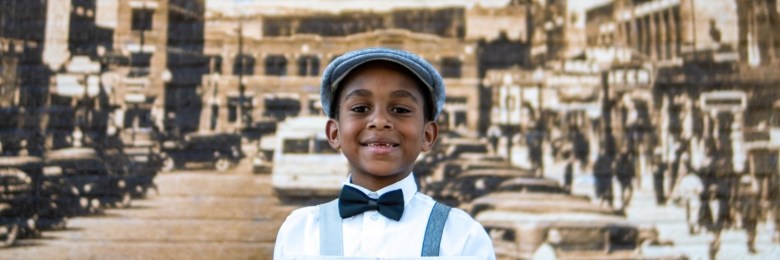|
Listen to this article here
Getting your Trinity Audio player ready...
|
TULSA, Okla. – The U.S. Department of Justice (DOJ) has, for the first time, released a comprehensive report on the 1921 Tulsa Race Massacre, exposing the militarized destruction of Greenwood—the vibrant Black community known as Black Wall Street. The report reveals chilling new details about the massacre, describing it as a deliberate, military-style attack.
“This report lays bare new information and shows that the massacre was the result not of uncontrolled mob violence but of a coordinated, military-style attack on Greenwood,” said Kristen Clarke, Assistant Attorney General for the Justice Department’s Civil Rights Division. “Now, more than 100 years later, there is no living perpetrator for the Justice Department to prosecute. But the historical reckoning for the massacre continues,” Clarke added.
The findings mark a watershed moment in acknowledging the federal government’s legacy of racial violence, but the DOJ’s conclusion—that prosecutions are unattainable—has left survivors and descendants frustrated, largely due to the roles of Tulsa officials, its police, and the National Guard in aiding the White mob that destroyed Black Wall Street.
Why the DOJ Says Justice Is Unattainable
The DOJ report attributes its inability to pursue justice to a combination of legal and logistical barriers:
- Passage of Time: The massacre occurred over a century ago, and all potential perpetrators are deceased. Even the youngest defendants would be over 115 years old today.
- Statutes of Limitations: Legal time limits for federal civil rights offenses related to the massacre have long expired. Even if perpetrators were alive, these statutes would preclude prosecution.
- Constitutional Challenges: The Confrontation Clause of the Constitution requires live witnesses who can be cross-examined. With no surviving witnesses able to provide direct testimony about specific perpetrators, prosecution is constitutionally unfeasible.
A hollow reckoning for the Greenwood Community about DOJ report
For the Greenwood community, the DOJ’s findings underscore a broader systemic failure to address historic racial violence. Survivors and community leaders expressed disappointment at the lack of legal accountability, mainly because they blame the city of Tulsa, the Tulsa Police Department and the National Guard for disarming Black residents, detaining them in internment camps, and, in some cases, participating directly in acts of violence, including murder, arson, and looting.
“The DOJ’s report and response is no surprise. They are doing what they do. They weren’t willing to set precedents. The city and the state have already shown just by fighting it in court that they are not willing to address and satisfy the issue properly,” said Joyce Smith-Williams, a longtime community resident and leader.
The disappointment is compounded by the Oklahoma Supreme Court’s recent dismissal of a landmark lawsuit filed by the last two living survivors of the massacre, Lessie Benningfield Randle and Viola Ford Fletcher, both 110 years old. Smith-Williams explained the broader implications: “To open the door for a critical interpretation of what happened and the responsibility therein would have opened the door for Rosewood, the Red Summer of 1919, Wilmington. It would have set precedents.”
Community Leaders Look to Other Avenues
Despite the DOJ’s decision, some community leaders remain optimistic about alternative pathways to justice. Tyrance Billingsley, founder and CEO of Black Tech Street, attended a meeting with DOJ officials on Saturday and sought clarification on whether this decision impacted reparations efforts.
“It’s not surprising. I figured that that would be the case,” Billingsley said in response to the DOJ’s report and decision not to prosecute. “I did ask the question to clarify: ‘This doesn’t preclude any reparations-type work?’ And Clarke said it doesn’t. So, I walk away with the idea that there are other efforts to get reparations. None of that has to stop. It just won’t come by way of the federal government, which I don’t think too many of us expected anyway.”
Steph Simon, a Greenwood music artist, echoed the community’s frustration with the lack of accountability: “It’s unfortunate nobody wants to do the work anymore. There ain’t any perpetrators alive—that they know of—but there are relatives and beneficiaries from that attack still out here today. Just like there are businesses that have been in business since 1921, and nobody wants to do the work to track the massacre when it’s really not hard to tell.”
The Fight for Justice Continues
The DOJ’s report represents a bittersweet acknowledgment of the atrocities inflicted on Greenwood but also highlights the limitations of the legal system in addressing historic racial violence. For many, this moment serves as a reminder that justice and reparations must come from persistent community-led efforts and advocacy, not just from the federal government.
Smith-Williams and other leaders emphasize that the fight is far from over. While prosecution may be unattainable, the path to reparations, accountability, and racial healing remains open.
As the Greenwood community reflects on this historic report, the call to action is clear: the pursuit of justice must continue, and the legacy of Black Wall Street must endure—not as a tragedy, but as a testament to resilience and resolve.


